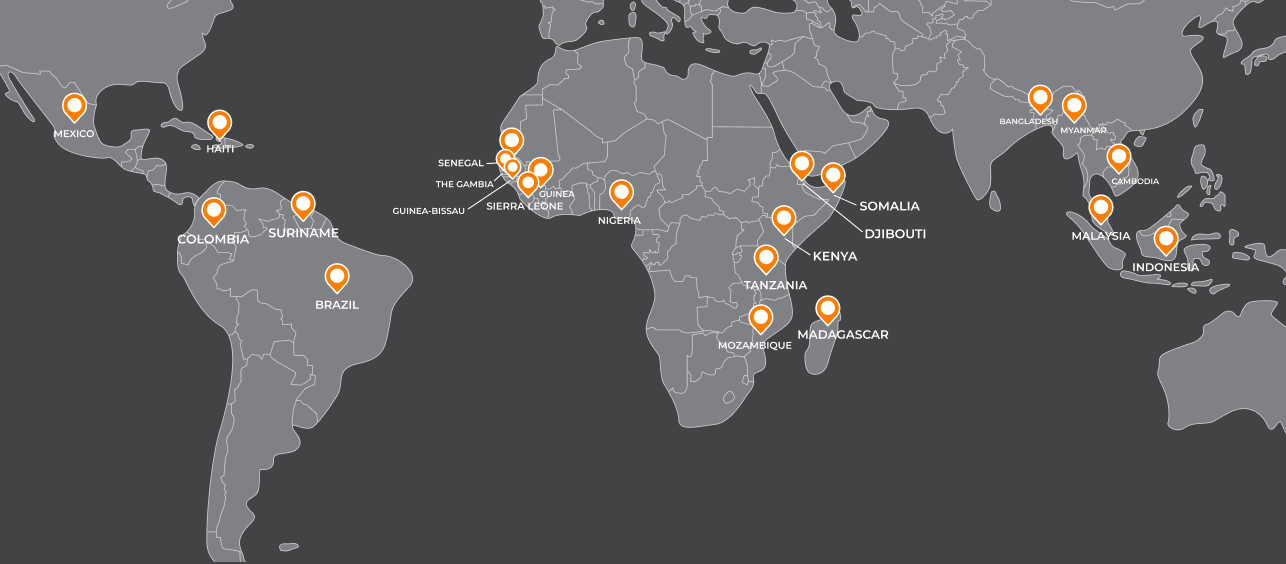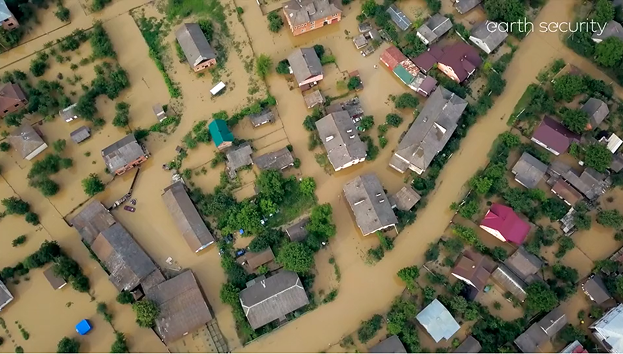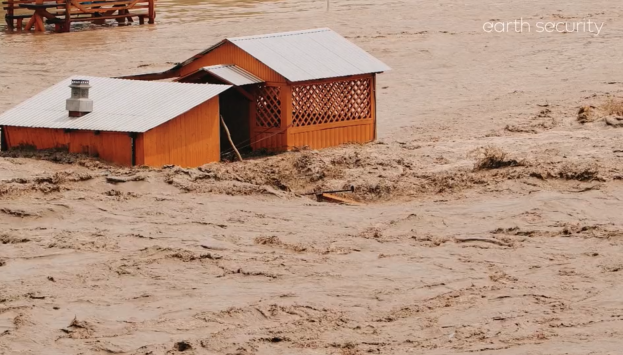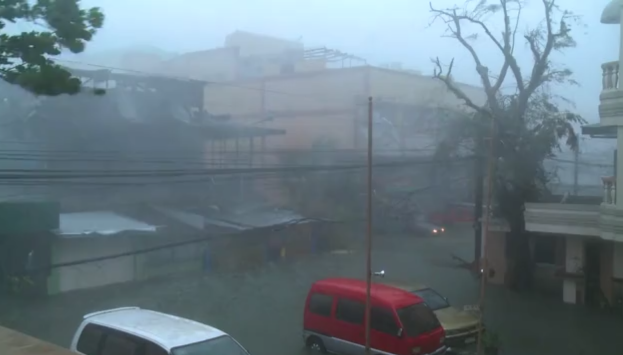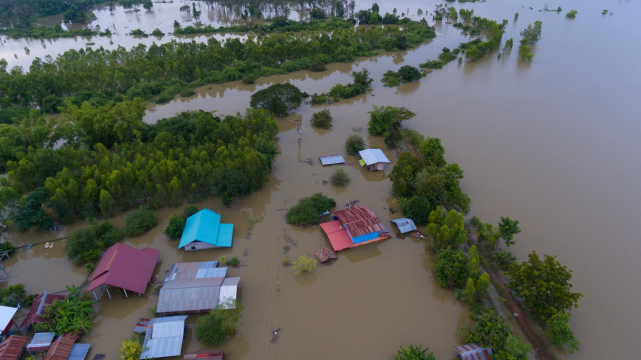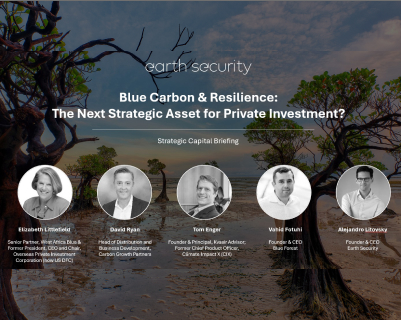Markets are Repricing Resilience
Global growth has relied on the premise that the Earth’s systems underpinning our infrastructure are stable. 2025 has called that bet. Fragility is no longer a forecast – it’s the new pricing signal.
Three trends continue to amplify the repricing of resilience throughout 2025:
- Trade chokepoints. A multi-year drought throttling the Panama Canal by 2024 forced the authority to slash vessel transits. It now plans to invest $8.5 billion over the next five years in resilience measures. With 80% of global trade moving by sea and nearly 60% of ports face rising exposure to extreme weather events and sea-level risk, this is expected to be a major area for resilience investments.[i] [ii] [iii]
- Export nationalism and climate risk. Russia’s invasion of Ukraine impacted global food and fertilizer prices. Export restrictions went up, inflating import bills across emerging markets.[iv] A new wave of tariff-led resource nationalism is growing alongside the impacts of climate change, which in the case of drought also tend to trigger export restrictions on food. The International Monetary Fund (IMF) estimates that 1 percentage point increase in climate change vulnerability is associated with a 15.55 basis point increase in sovereign debt risk premiums.[v]
- Insurance pullback is accelerating. Global economic losses from natural catastrophes reached $318 billion in 2024, with only 43% insured – leaving a ‘protection gap’ of $181 billion.[vi] Wildfire and flood coverage has been dramatically reduced in parts of the US, Australia and the Mediterranean. The result is rising costs of capital for exposed real assets and stranded value where coverage disappears.
This is not an ESG story – it’s the repricing of systemic risk. Climate and nature shocks translate directly into insurance capacity, sovereign spreads, and real-asset valuations.
Over a decade ago, Earth Security warned that climate change, biodiversity loss, and resource scarcity would reshape how we define country risk and economic security. It called for “resilience investing” — a framework for capital allocation that treats ecological limits as a core financial variable. Back then, it felt prescient. Today, the data makes it hard to ignore.
This briefing is the first in a new series that provides asset owners, capital allocators and sovereign investors with signals on how markets are adjusting. This one introduces a framework for capital to stay ahead of the curve: The Resilience Investor Playbook.
Investors should expect the erosion of natural systems — water, forests, soils, and oceans — to be increasingly priced into markets through freight rates, insurance costs, and sovereign yields.
From Reporting to Repricing
The European Central Bank shows that climate exposure now affects one-in-four sovereign credit ratings,[vii] while S&P Global reports that over US $10 trillion in listed equity value – roughly 60% of the companies in the S&P500 – is tied to regions facing high physical climate risks – wildfires, water stress, heatwaves and hurricanes.[viii]
The first era of sustainable finance was built on reporting — carbon disclosure, ESG metrics, voluntary standards and climate and nature risk. Transparency remains essential to reveal exposures – but it does not hedge risk.
Resilience is about repricing and redeploying capital —internalising systemic fragility through premiums, yields, and valuations, and directing investment into systems that can endure shocks and adapt in real time. This shift is forcing investors to move from monitoring exposure to actively underwriting resilience — embedding it in credit analysis, pricing models, deal structuring and investment strategies.
We’re already seeing it happen:
- Insurance and reinsurance are moving first. Catastrophe bonds and insurance-linked securities raised record volumes in 2024, embedding climate risk into yield structures, as investors demanded compensation for correlated climate risk. [ix]
- Real assets are differentiating by resilience. Infrastructure funds are reweighting portfolios toward adaptation — coastal defenses, distributed power, water reuse — treating these as low-volatility, inflation-hedged anchors in turbulent markets.
- Sovereign spreads are shifting. Ratings agencies and investors are quietly embedding environmental risk into sovereign credit models. Debt-for-nature and debt-for-resilience swaps are becoming early experiments in how natural capital can influence country risk premiums.
The cost of capital is beginning to price resilience — and those who read these signals early will anticipate the next wave of asset repricing. The question is no longer whether a project delivers growth in normal conditions, but whether it continues operating under stress.
The Resilience Investor Playbook
Resilience investing isn’t a virtue signal – it’s a volatility strategy that performs when systems fail. It is well suited to an era of increased partisanship and pushback to traditional ESG agendas.
Resilience investors must operate across three tiers — asset-level resilience, system-level risk pricing, and portfolio-level adaptation — translating systemic fragility into investable foresight.
1. Asset-Level Resilience
- Underwrite place-based assets. Finance projects where ecological and financial resilience converge — from port and coastal infrastructure to blue carbon coastal ecosystems, such as mangroves, that reduce risk exposure while creating new revenue streams from natural infrastructure.
- Re-rate water and material constraints. Contracts and credit models must internalize resource limits, from aquifer depletion to rare-earth supply volatility, especially for long-duration assets.
2. System-Level Risk Pricing
- Innovate in critical-mineral bottlenecks as clean-energy demand collides with ecological and permitting constraints. Market diversification and circular models increasingly provide buffers against strategic disruptions.
- Engage sovereign and sub-sovereign actors. Support debt-for-nature and debt-for-resilience swaps that improve a country’s credit trajectory, reducing environmental fragility and linking natural capital to core industries (e.g. blue bonds for fishing- and tourism-dependent economies).
- Track insurance withdrawal zones. The risk of stranded assets is an entry point for new financial instruments — from parametric coverage to resilience-linked bonds.
3. Portfolio-Level Adaptation
- Stress-test interdependencies. Model correlated shocks — El Niño cycles, droughts, trade disruptions and geopolitical flashpoints — that move beyond sector and issue silos. Forward-looking indicators must focus on valuing circular and regenerative models driving operational resilience.
- Leverage resilience data. Back, engage and apply the work of platforms that are tracking soil health, water drawdown, forest cover — reducing information asymmetry across portfolios.
What Lies Ahead
For sectors like food & agriculture, shipping & logistics, coastal infrastructure, and insurance-linked capital, resilience is moving from a peripheral theme to a primary performance driver.
- In agriculture, climate volatility is driving higher input costs, reduced yields, supply chain risk and price volatility, and premium risk for land assets.
- In shipping and maritime logistics, infrastructure adaptation and maritime risk are redefining the economics of freight and port investment.
- In insurance, the risk of capital flight from climate exposed geographies opens new markets for parametric products and blended public–private mechanisms.
The age of planetary resilience has arrived — and the repricing has only just begun.
— Alejandro Litovsky, Founder, Earth Security.
[i] ‘How could Panama Canal restrictions affect supply chains?’, Mckinsey & Company, January 19, 2024.
[ii] ‘The State of Maritime Supply-Chain Threats’, Center for Strategic and International Studies (CSIS), November 4, 2024.
[iii] ‘Review of Maritime Transport 2025’, UN Trade and Development (UNCTAD), 2025
[iv] ‘Food and Fertilizer Export Restrictions Tracker’, International Food Policy Research Institute (IFPRI)
[v] ‘This Changes Everything: Climate Shocks and Sovereign Bonds’, Working Paper, International Monetary Fund (IMF), June 5, 2020.
[vi] ‘Sigma 1/2025: Natural catastrophes: insured losses on trend to USD 145 billion in 2025’, Swiss Re Institute, April 29, 2025.
[vii] ’From words to deeds – incorporating climate risks into sovereign credit ratings.’ European Central Bank (ECB), July 30, 2025.
[viii] ‘Understanding Climate Risk at the Asset Level: The Interplay of Transition and Physical Risks’, S&P Global & DWS, 2019
[ix] ‘Investors embrace ‘cat’ bonds’, Financial Times, October 1, 2025
Explore the reports
The Earth Security Index Reports provided in-depth analysis of critical themes across selected industries and market geographies, enabling investors to anticipate and respond to emerging global dynamics. Download and explore the full Earth Security Index reports:






